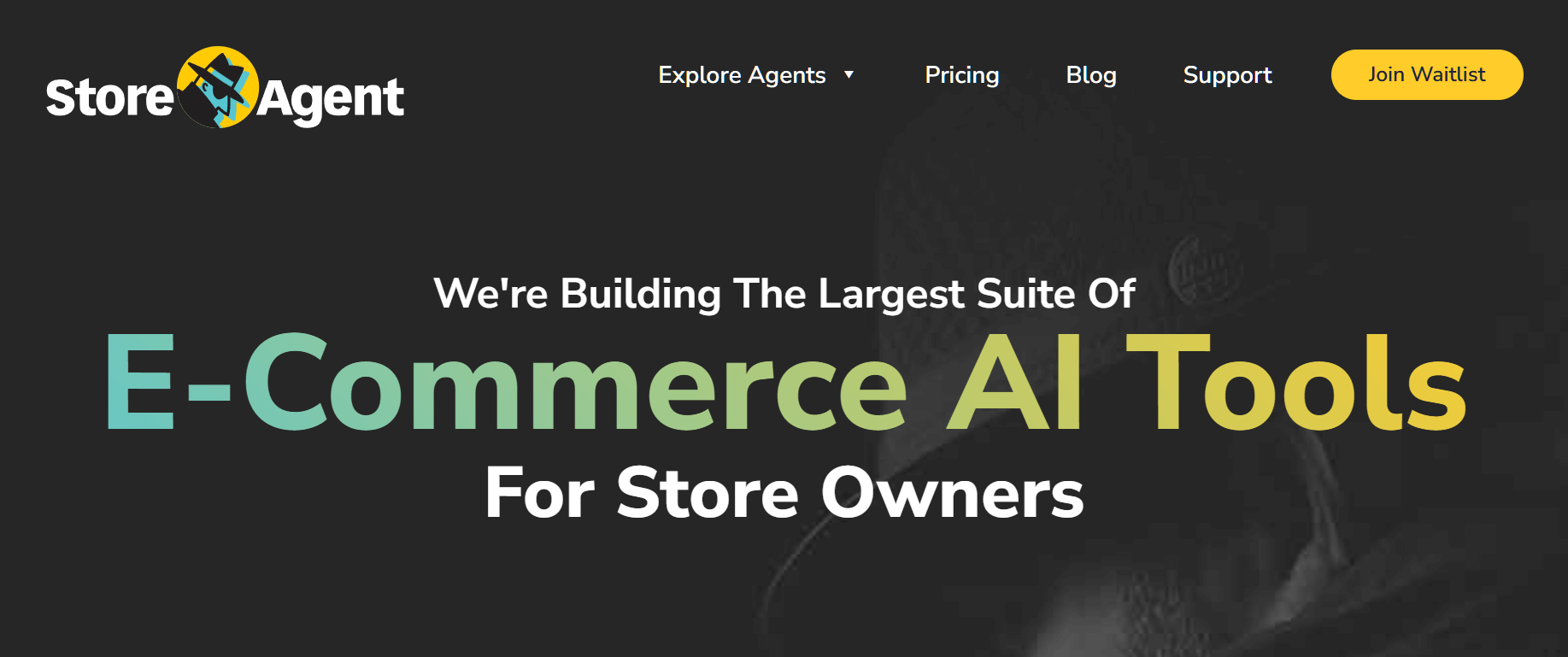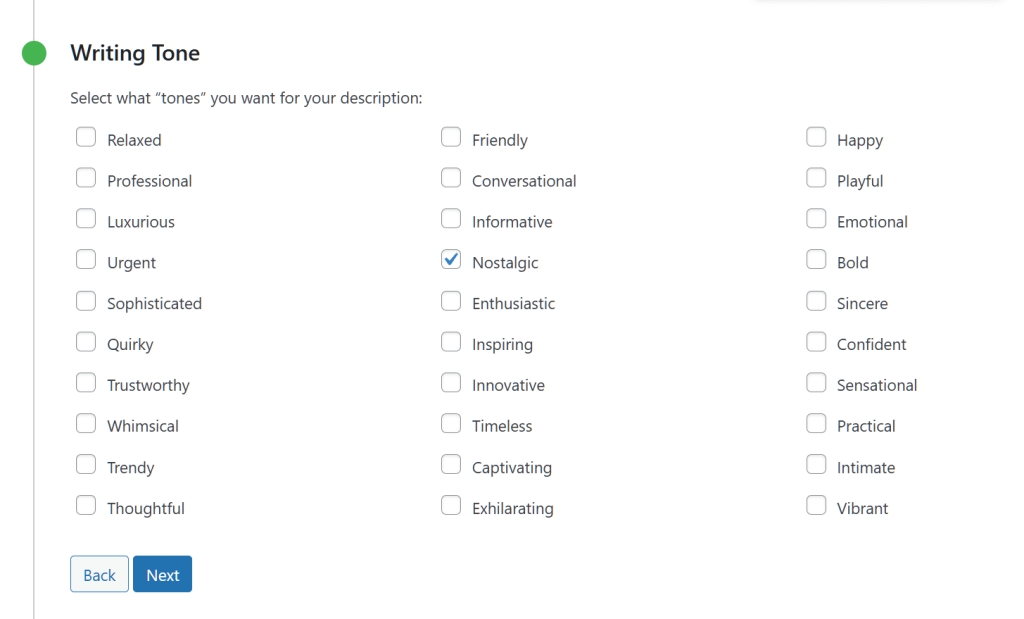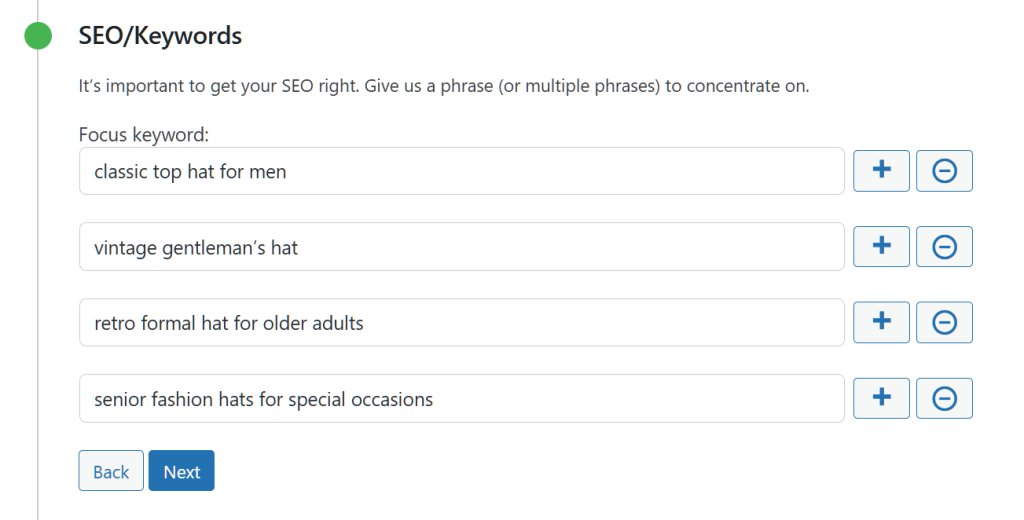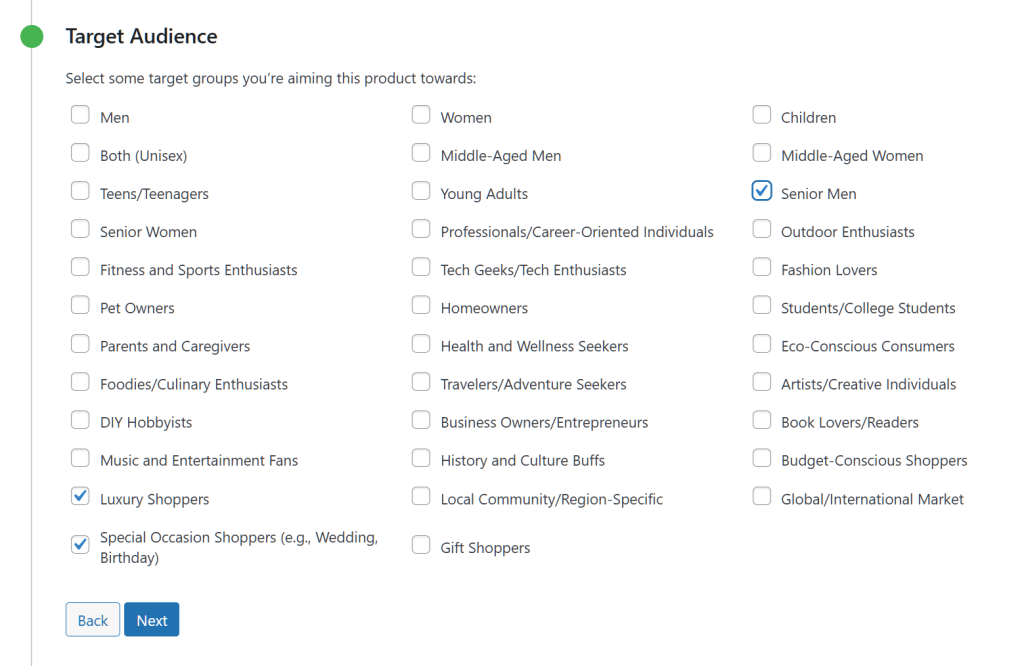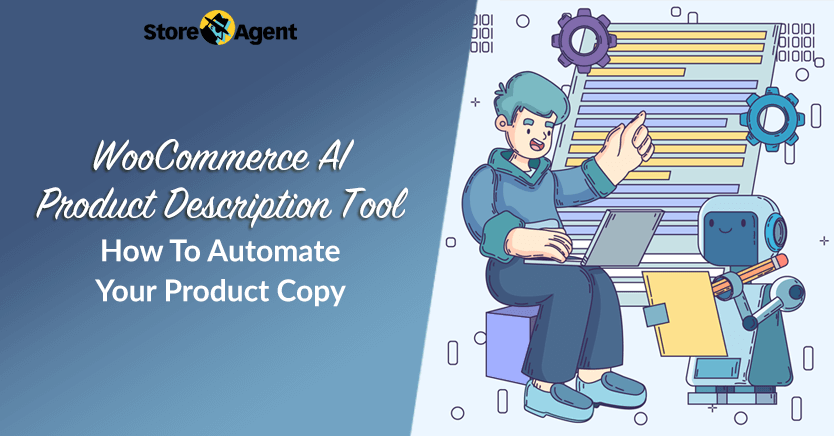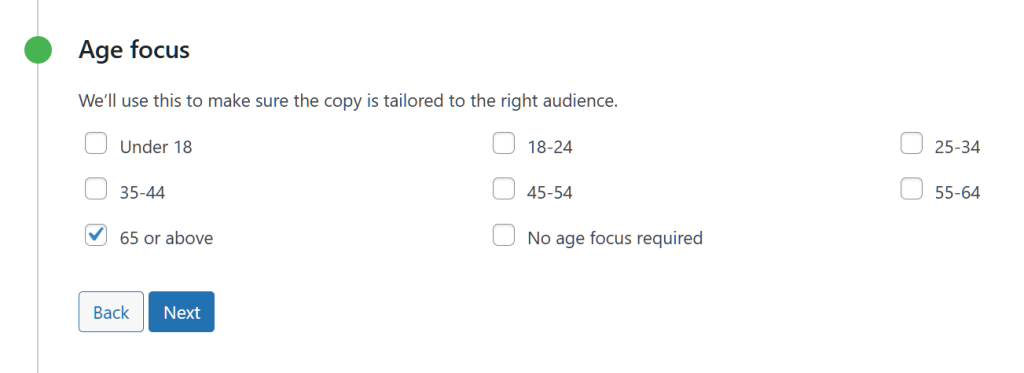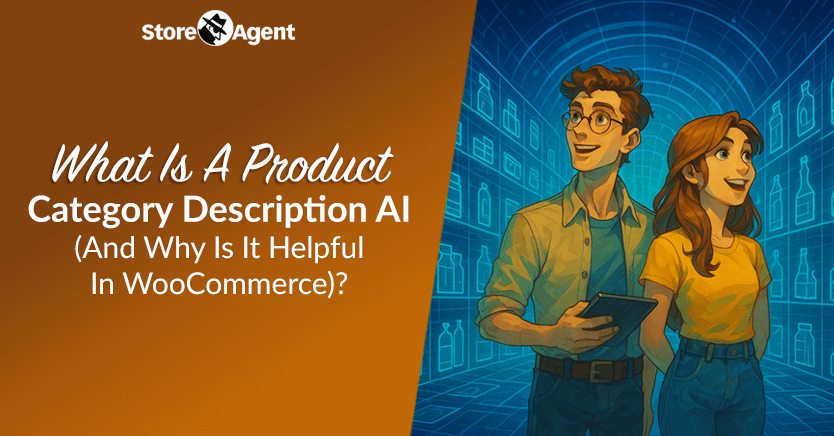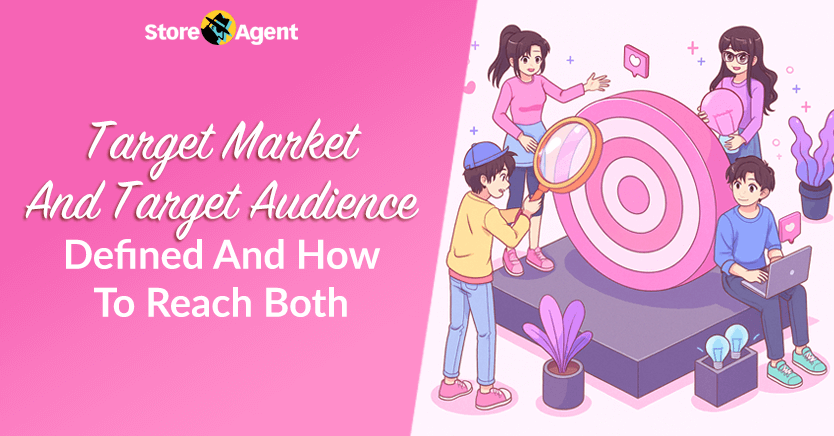
Target market and target audience often get mixed up, and when they do, marketing falls flat. Maybe your product’s great, but the message doesn’t click. Or your ads get views but not sales.
The fix? Learn to speak to the right people in the right way.
This article breaks down the difference between target market and target audience and shows why both matter. Furthermore, it explains how StoreAgent can help you reach each both, helping you boost your business.
So let’s jump right in!
- I. Target Market And Target Audience Explained
- II. Target Market And Target Audience: Why Understanding Both Matters
- III. How StoreAgent Helps Reach Both Target Market And Target Audience
- Conclusion
I. Target Market And Target Audience Explained
To market a product effectively, you need to know exactly who you’re trying to reach, starting with your target market and narrowing down to your target audience.
1. What is a target market?
A target market is the full group of people most likely to buy a product. It’s the starting point for figuring out who a store is really selling to.
- It’s based on shared traits
A target market is often defined by demographics, which means things like age, income level, or location. It can also include interests or values that people share. - It focuses on the bigger picture
Instead of looking at a single ad or message, a target market covers long-term goals. It guides store owners when choosing which products to sell and how to price them. - It helps shape your store’s voice
Knowing who the main market is can affect how a store talks. The way a brand sounds often shifts to match what the market will understand or relate to.
A target market works like a map. It gives direction before any product or ad is created. Without it, stores risk selling in the dark.
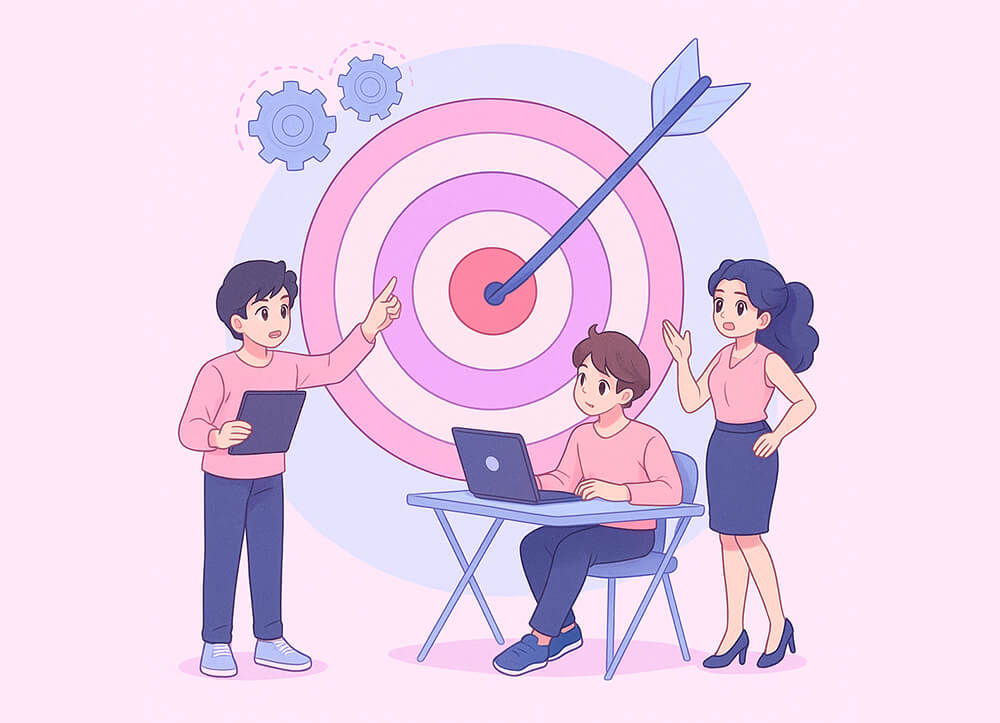
Examples
- A fitness store selling home gym gear may target adults aged 25 to 45 who live in suburbs and prefer working out at home.
- A store offering handmade pet accessories might focus on pet owners under 40 who treat their animals like family.
- An online bookstore for kids may focus on parents in their 30s who value reading and live in English-speaking countries.
2. What is a target audience?
A target audience is the specific group a message is meant for. It’s a smaller part of the larger target market, chosen for a particular purpose.
- It shifts with each campaign
While the target market stays mostly the same, the target audience can change depending on the goal or message. One product might be promoted to students in one ad and to parents in another. Both belong to the same market, but each ad speaks to a different group. - It shapes the message
The words, tone, and images are chosen to match the audience. A younger crowd might respond to casual phrases and bold visuals. An older group might prefer a cleaner design and clear facts. - It’s not fixed
A business can have more than one audience. Each ad, post, or campaign may speak to a different slice of the market, depending on the timing and strategy.
A target audience is like a spotlight. It focuses attention on the people a message needs to reach right now, even if the whole stage is filled with more.

Examples
- A skincare brand’s target market might be women aged 30 to 50, but a summer sale ad could speak directly to working moms looking for quick self-care.
- A company selling healthy snacks may run one ad for fitness fans in their 20s and another aimed at parents packing school lunches.
- A tech store could aim a laptop ad at college students right before the school year, even though the general market includes professionals, too.
Target market vs target audience: Side-by-side differences
Here’s a table that clearly shows the key differences between a target market and a target audience:
| Aspect | Target Market | Target Audience |
|---|---|---|
| Scope | Broad group of people likely to buy a product. | Narrow group the message is aimed at. |
| Purpose | Guides what products to create and how to price them. | Shapes how the message is delivered. |
| Stays the same? | Usually stays consistent. | Can change with each campaign. |
| Based on | Demographics, interests, behaviors, and needs. | Specific goals like selling, informing, or getting a response. |
| Chosen by | Business strategy, research, and product fit. | Type of message, platform, and timing. |
| Used for | Long-term planning and product development. | Day-to-day marketing content and campaigns. |
And here are three examples that further clarify the differences between a target market and a target audience.
| Example 1 | Parents who buy school supplies. | Moms looking for lunchbox deals on social media. |
| Example 2 | Young adults who like fitness gear. | Runners seeing a promo for new shoes in a weekly email. |
| Example 3 | Small business owners shopping for office tools. | Freelancers shown a how-to video on a project management app. |
II. Target Market Vs Target Audience: Why Understanding Both Matters
Understanding the difference between a target market vs target audience helps a store speak more clearly. If the two get mixed up, messages miss their mark. Products can be great, but the wrong message can still turn people away.
Some stores guess at who they’re talking to. Others pick the right market but don’t shift the message when needed. Both situations lead to wasted time, missed sales, or flat responses.
When both the market and the audience are clear, things run smoother. Stores know what to make, who might buy, and how to talk to customers. It’s like having a map and a flashlight; you know where you’re headed and who to call out to on the way.
This kind of clarity makes marketing work better. It helps teams avoid confusion, adjust faster, and test smarter.
1. It avoids missed sales
If the message is aimed at the wrong group, even the best products can flop. A fitness drink made for teens might not sell if it sounds like it’s for older athletes. Mixing up market and audience means losing chances to connect.
2. It makes campaigns feel more personal
When both parts are clear, messages can speak to people in a way that feels real. A baby brand can keep its market the same—young families—but use one ad for new moms and another for grandparents. That helps everyone feel included.
3. It helps teams stay focused
Knowing who the product is for and who each message should reach keeps things from drifting. It gives copywriters, designers, and ad managers a shared target. That saves time and keeps the message sharp.
4. It improves testing and learning
When stores separate the market from the audience, they can test messages faster. They learn which tone, format, or platform works best for each group without changing the whole product strategy.
5. It keeps spending efficient
Clear audience targeting prevents waste. Instead of showing ads to everyone in the market, stores can focus on those most likely to respond at that moment. That saves money and boosts results.
When stores know their market and pick the right audience each time, it’s easier to stand out. Messages feel stronger, and shoppers are more likely to listen.
III. How StoreAgent Helps Reach Both Target Market And Target Audience
StoreAgent is a suite of AI tools built to make ecommerce management easier, faster, and more effective.
These AI tools come with features that help you reach both your target audience and target market.
Here’s how:
1. Product Description AI
Product Description AI generates clear, engaging, and detailed descriptions for the products you’re selling in your store.
To connect with your ideal buyers, this AI does more than just list features. It can highlight benefits, speak in the right tone, and answer the questions your customers are already thinking.
It achieves all this by letting you configure details like:
- Age focus
- Target audience
- Writing tone
- SEO keywords
- Product highlights
For example, let’s say you’re selling top hats for seniors.
You could instruct the AI to focus on customers aged 65 and above and to use the “nostalgic” writing tone.
You could have the AI use SEO keywords that seniors would use when searching for your products, such as:
Of course, you can also select the target audience:
Once set, this tool instantly generates descriptions that feel human and are tailored to the people you’re trying to reach.
In short, it helps you speak directly to your target market (by adjusting voice and style) and your target audience (by highlighting what matters to them).
Whether you’re selling to parents, hobbyists, travelers, or professionals, the Product Description AI shapes your product copy to meet them where they are.
Eager to know more about StoreAgent’s Product Description AI? Theck check out our exclusive guide:
WooCommerce AI Product Description Tool: How To Automate Your Product Copy
2. Category Description AI
Category Description AI helps you write compelling, informative descriptions for your product categories. Therefore, it helps customers instantly understand what the category offers and who it’s for.
This tool works similarly to Product Description AI, helping you pick the age focus, target audience, writing tone, and more. Thus, it can also help you reach the right customers.
Curious about StoreAgent’s Category Description AI? Learn more about it by reading our comprehensive guide:
What Is A Product Category Description AI (And Why Is It Helpful In WooCommerce)?
Smart tools that work together to target the right people
When used together, Product Description AI and Category Description AI make your entire store feel more personal and focused. Descriptions match the age, interests, and tone that your ideal buyers connect with, across individual products and broader categories.
Other StoreAgent tools like Product Tag Generator and Product Questions AI take it even further. The former can generate tags that match customer search habits and improve product discovery. Meanwhile, the latter helps answer the exact questions your target audience is asking, before they even need to ask.
So whether someone’s browsing, searching, or hesitating, StoreAgent helps you reach the right market and speak to the right audience, at every step.
Conclusion
Understanding your target market and target audience helps WooCommerce stores connect with the right people at the right time. Your target market shapes your long-term strategy, while your target audience guides each message you send.
Plus, with tools like StoreAgent, you can reach both more effectively, improving engagement, saving time, and making every campaign count.
To recap, this article explored the following key concepts regarding target audience vs target market:
- Target market and target audience explained
- Target audience vs target market: why understanding both matters
- How StoreAgent helps reach both your target market and target audience
Interested in using AI to reach specific customers? Explore StoreAgent today to discover how it can help enhance your business!
